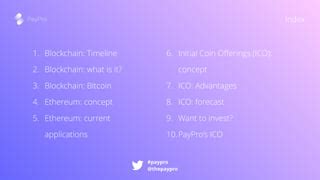Ethereum: Is the current network’s difficulty algorithm suitable for “only event mines”?

As the cryptocurrency market develops and continues to grow, the question of whether they are not known to the term PTM, it refers to a hypothetical scenario where miners rely solely on transaction fees instead of preventing rewards as a primary income source.
In this article, we explore the advantages and disadvantages of using the current Ethereum Difficulty Algorithm and discuss whether it is really suitable in the narrow market.
Understanding Several Algorithms
At its core, a difficulty algorithm in Blockchain networks, such as Ethereum, defines how often blocks are mined. The purpose of these algorithms is to balance the reward structure with the network’s general security and stability. In most cases, higher levels of difficulty means that mining workers need more computational strength to solve complex mathematical problems that encourage them to participate and secure the network.
PTM case
When it comes only to transaction-mining, the focus is on reducing the cost of electricity consumption. As electricity prices vary, miners can adjust the equipment used in local trends. For example, if the cost of electricity rises in a particular area, mining workers can decide to turn off their equipment during congestion or use more efficient equipment.
However, for PTM, the difficulty algorithm of the network is less critical than ever. The transaction fee encourages mining workers to continue mining, even during low electricity costs, as they receive higher fees in the block. This means that the primary controller of the mining worker may not be a high reward controller, but shows the opportunity to earn money from every block.
Is the algorithm of Ethereum fits PTM?
Currently, the difficulty algorithm of Ethereum does not take into account transaction fees in a way that would lead to mining workers to strongly rely on their only source of income. Although the algorithm takes into account different factors, such as the desires of rewards and intelligent complexity of contracts, it does not naturally prefer or punish miners based on local electricity costs.
In addition, Ethereum’s scalability features such as Sharding and Layer 2 solutions are designed to improve network efficiency and reduce congestion, which makes it less dependent on high fees. In addition, the current difficulty algorithm is relatively solid and does not allow significant changes in response to changing market conditions.
conclusion
In summary, while Ethereum’s current difficulty algorithm may be suitable for certain use cases or scenarios where mining workers are guided by local electricity costs, its design does not naturally recommend top -notch mining operations. As mining workers adapt to changing market conditions and improved scale, demand for higher rewards may increase, but this is likely to be higher in terms of reduced network security and stability.
So far, the algorithm of Ethereum seems appropriate for different use cases that do not rely on transaction fees as a primary source of income. However, with the development of the market, it will be interesting to see how mining workers adapt and whether changes can be made into a difficulty algorithm or other factors, which can significantly lead to changes in the behavior of mining workers.
References:
- Ethereum.org: “Difficulty Algorithm”
- Ethereum.org: “Scalability properties”
- Cryptoslate: “Ethereum Difficulty Algorithm: What Next?”
Để lại một bình luận